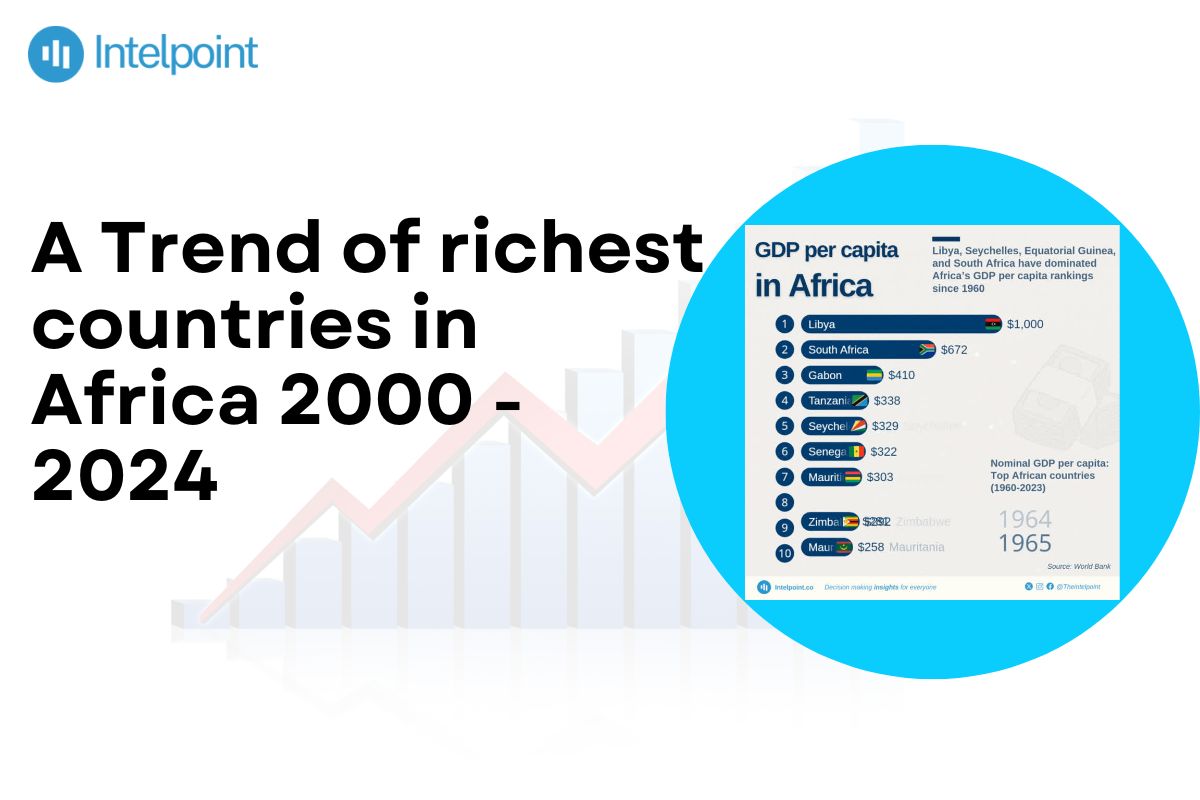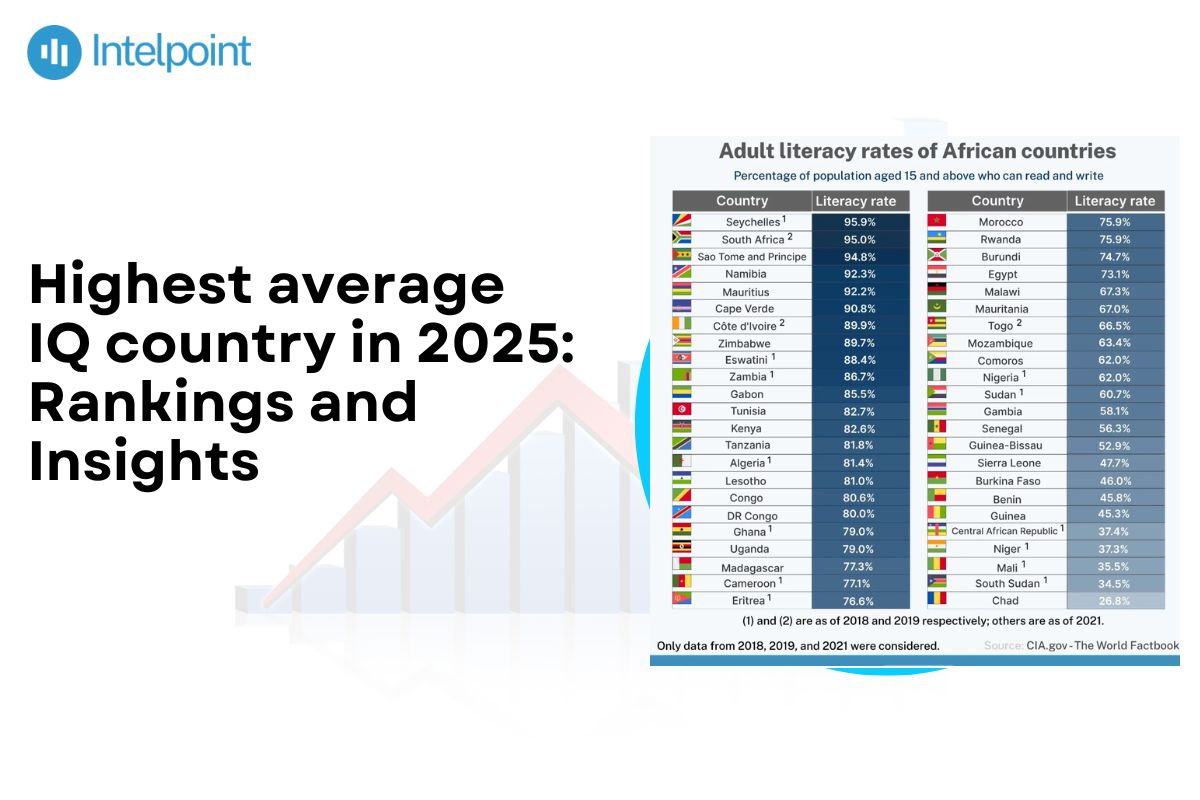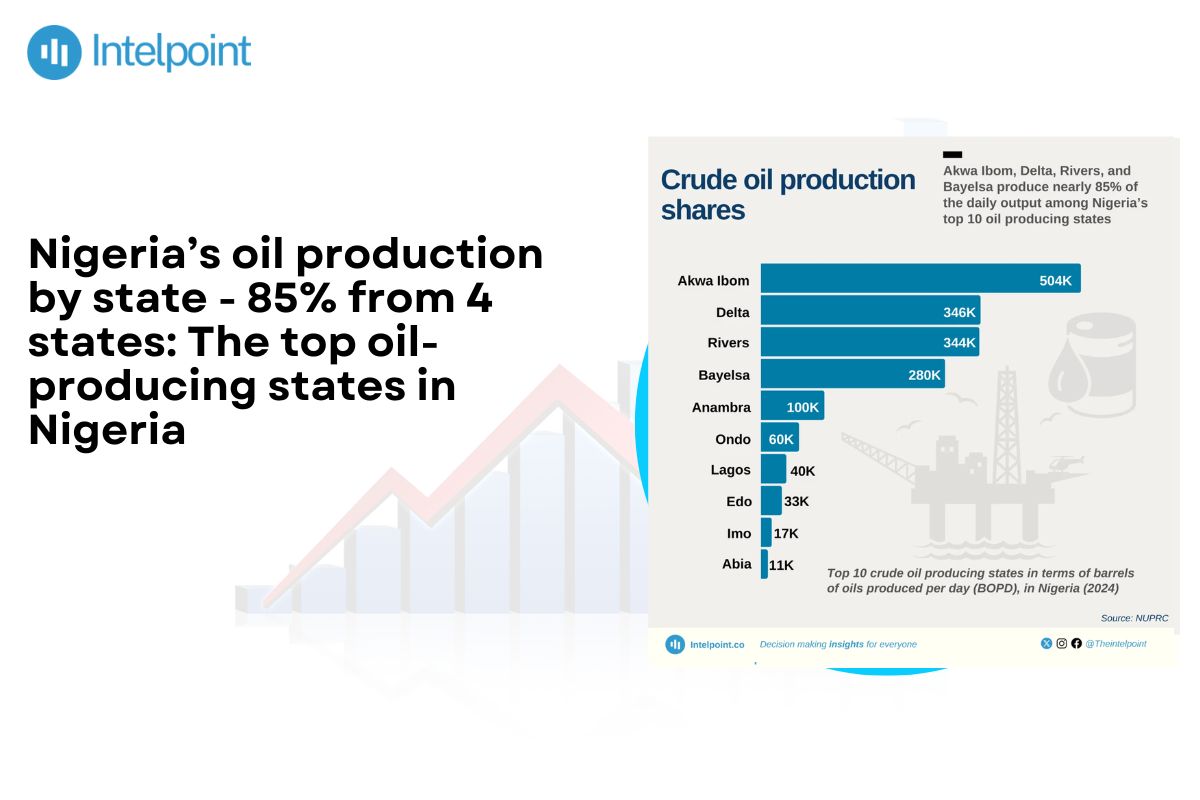Introduction
Africa is blessed with a wealth of natural resources, diverse cultures, and a rapidly growing population. This rising population holds wealth potential for Africa if properly utilised. There are many measures employed by economists to determine the richest country in Africa; the Gross Domestic Product (GDP) per capita remains a commonly used indicator. GDP represents the total value of goods and services produced by an economy during a given period, while GDP per capita measures a country’s economic output per person.
In the past 24 years, several nations have been crowned the continent's richest, primarily depending on GDP per capita and overall economic factors such as natural resources, political stability, and diversification. From 2000 to 2024, the trend has been largely shaped by oil-rich nations, though some smaller, well-managed economies have also performed well. The key to sustainable GDP per capita growth lies in controlled population size, as many of the nations with the highest GDP per capita in Africa are characterised by smaller populations. A smaller population enables governments to allocate resources more effectively toward infrastructure and human development, thereby driving economic growth.
Key takeaways
- 2000: Seychelles led Africa with a GDP per capita of $8,064, propelled by its growing tourism sector and political stability. It remained the richest country in Africa until 2006.
- 2010: Equatorial Guinea emerged as the wealthiest African nation with a GDP per capita of $13,776.90, driven by its vast oil reserves discovered in 1996 and expanding production.
- 2015: Seychelles reclaimed the top spot with a GDP per capita of $15,333, aided by economic diversification and stable governance, while Equatorial Guinea’s GDP per capita sharply declined by 42% to $9,789.
- 2020: Seychelles cemented its position as Africa’s wealthiest country, with a GDP per capita of $14,041, fuelled by strategic international partnerships and a diversified economy.
- 2024: In 2023, Seychelles retained its top position, with Mauritius rising to second place at $11,417, driven by its diversified economy in tourism, manufacturing, and finance. Meanwhile, Equatorial Guinea's GDP per capita fell sharply to $7,067, dropping to 6th place.
2000–2010: Between Seychelles and Equatorial Guinea
Seychelles emerged as the richest country in Africa in 2000 with a GDP per capita of $8,064. The East African country's blossoming tourism sector and political stability provided a base for it to flourish and remain Africa's richest country from 2000 to 2006 ($12,783). However, the discovery of large oil reserves in Equatorial Guinea in 1996 and the government policies which led to expanded production paved the way for it to emerge the the richest country in Africa in 2007 with a GPD per capita of $13,776.90, retaining the top spot till 2010.
2010–2015: Equatorial Guinea’s oil boom
The Republic of Equatorial Guinea, located in Central Africa, reached its peak GDP per capita of $18,756 in 2012. As an oil-rich nation, it retained the title of Africa's richest country until 2014. However, overreliance on fluctuating oil prices caused a sharp economic downturn in 2014, leading to a significant decline in GDP per capita. By 2015, Seychelles regained the top spot with a GDP per capita of $15,333, while Equatorial Guinea’s dropped by 42%, from $16,805 in 2014 to $9,789 in 2015.
2015–2020: Seychelles' GDP per capita peaked
Seychelles cemented its place as the richest country in Africa, retaining the top spot until 2020. The country’s strategic international partnerships with China, the European Union, and the World Bank, along with its effective economic management, led to continued GDP growth year-over-year from 2015 to 2019, reaching a peak of $19,142 in 2019.
2020–2023: Economic diversification strengthens Seychelles
In 2021, as countries began recovering from the devastating effects of COVID-19, Seychelles stood out for its prudent resource management and economic diversification, which ensured that its GDP per capita dominance remained unchallenged. In contrast, Equatorial Guinea saw a significant decline, with its GDP per capita dropping to $7,067 by 2023, pushing it down to sixth place in Africa. Meanwhile, Mauritius continued to rise, securing the second spot, driven by its successful diversification into tourism, manufacturing, and strong financial services. By 2023, Mauritius' GDP per capita had reached $11,417
Conclusion
The trends of Africa's wealthiest countries have been significantly shaped by the ability to diversify economies. In 2000, Seychelles led with a GDP per capita of $8,064, driven by tourism and stability. Equatorial Guinea surged in 2007, peaking at $18,756 in 2012 due to its oil reserves, but a 42% decline by 2015 saw Seychelles reclaim the top spot. By 2023, Seychelles remained strong at $14,041, while Mauritius rose to second with $11,417 due to its diversified economy. Equatorial Guinea’s overreliance on oil and lack of diversification led to its drop from the richest country in Africa in 2007 to the sixth in 2024.





